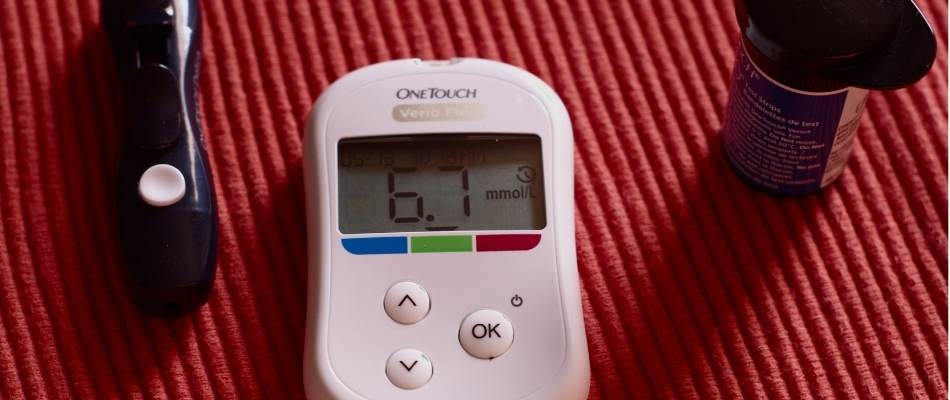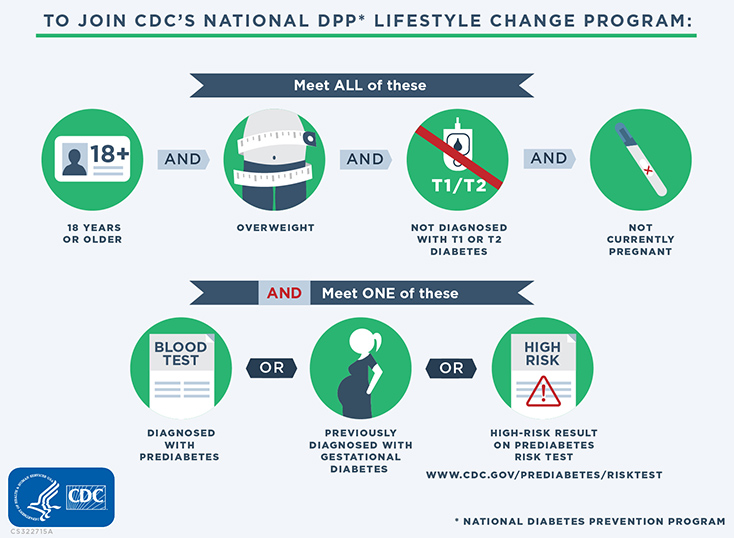A diagnosis of Type-2 Diabetes is incredibly difficult to manage because the disease makes it hard to do the two things necessary to keep your blood glucose in line: exercise and diet. Here’s the problem, people who have diabetes report being overweight, having low energy, being embarrassed to join exercise groups, and having knee, back, and hip issues related to weight gain or reduced blood flow. This makes any activity problematic and can feel isolating or cause anxiety leading to continued poor nutritional choices. However, this is where using tai chi for diabetes comes in.
Research indicates that using tai chi for diabetes can positively influence the regulation of blood glucose levels in Type-2 Diabetes Mellitus patients with consistent practice. Results are in part due to the increase in physical exercise and reduction in stress from practicing tai chi.
The decisions and habits that lead to diabetes most likely develop across years. It makes sense then that new decisions and habits are the ticket to making positive, permanent change. Tai chi, like all physical activities, has been shown to improve blood glucose levels. Tai chi has two unique characteristics though. It is accessible to anyone, even with physical limitations. It also has the added benefit of reducing stress which aids in better eating decisions and is necessary for weight loss.
Know Thy Self
A point that I clearly want to make here is that all people who made progress combining tai chi and diabetes maintenance strategies were followed medically. Many were on medication. We are all so unique in how diabetes has affected us so share this information with your doctor so that you can come up with a plan together. Know that tai chi is very versatile. It can be done for shorter time periods, with less movements, and even seated. LINK https://taichibasics.com/modifying-tai-chi-for-seniors-introduction-benefits-and-getting-started/. Find your starting point with a goal of increasing what you can do as your health markers improve.
Let’s jump in and talk about how tai chi and diabetes progress can go hand-in-hand, share western research results proving it, and end by sharing the work of someone who has designed specific tai chi that is good for diabetics.

2 Research Studies Supporting the Successful Use of Tai Chi for Diabetes
The name of the game when it comes to improvements in diabetes is lowering blood glucose levels in a fasted state. If we can first stabilize our numbers, we can then continue to alter our eating and exercise to improve them. This leads to secondary benefits of feeling better, being more mobile, and possibly reducing medication. However, first you need to get the numbers down using tai chi for diabetes has been shown to do this.
Adhering to a T’ai Chi Program to Improve Glucose Control and Quality of Life for Individuals with Type 2 Diabetes
In this study they invited 99 adults with diabetes to take part in a tai chi training program where they practiced a short tai chi form twice each week for six months. They then compared participants who were compliant for the six months with participants who were not. The Results?
“The adherent group had greater decline in fasting glucose than the nonadherers. The adherent group …had better quality of life in mental component summary, social functioning, mental health, and vitality as compared to the nonadherent group. “
It was clear that using tai chi for diabetes had positive effects on blood glucose level. The next thing we need to ask is if tai chi is the best physical activity we can be doing to reduce blood glucose levels. A later study got to the bottom of it
The Effects of Tai Chi on Type 2 Diabetes Mellitus: A Meta-Analysis
This research combined the results of 14 different studies that compared tai chi and other physical activities. Unique to all of the studies is that they had measures of blood glucose levels. I think that it is a fairly complex study because they began with 171 trials and only included the 14 that met their criteria. I would give these researchers bonus points too because they included studies that were done in China as well as the West. Most composite studies like this one only include English research which is a fraction of the science on tai chi that exists.
In the end, they found that there was no significant difference between the positive effects of tai chi and other exercise on diabetes. All activity improves blood glucose measurements when compared to non-exercise groups.
This is important information! The American Diabetes Association (ADA)LINKhttps://diabetes.org/ has long held that exercise is an important part of improving lifestyle for people with diabetes. This proves that tai chi is equal to, but just one of many available modalities.
The differentiating factor comes into play for people who cannot do traditional exercise because tai chi can be practiced by anyone. Add to this the fact that tai chi reduces stress and you can see how it is a great option for many.

How Does Tai Chi Improve Diabetes?
In order to understand how people are successful using tai chi for diabetes maintenance and improvements we need to look in two directions. First, diabetes is successfully treated with multiple lifestyle changes at once, not just a single solution. We need to see how tai chi fits into that. Secondly, we need to know how exactly diabetes is impacting health so we can understand how tai chi and diabetes work together symbiotically.
How Diabetes is Successfully Treated and How Tai Chi Can Help
With 1-in-10 U.S. adults having diabetes and this number doubling in the last 20 years1, you can be sure that tons of research money has been spent finding ways to slow and reverse the progression of the disease. Type-2 Diabetes is considered an “acquired” disease meaning that is the result of a lifetime of decisions and habits. It will be no surprise then that the solution involves a change in lifestyle.
The Center for Disease Control and Prevention (CDC) explains that there is no cure for diabetes but rather six activities that successfully mitigate some of the damaging effects of diabetes on the mild end of the spectrum (fatigue, depression) and the severe end (kidney disease, heart disease, and loss of vision).
6 Lifestyle Changes for Successfully Addressing Diabetes
- Losing weight
- Eating healthy food
- Being active
- Taking medicine as prescribed
- Getting diabetes self-management education and support
- Making and keeping health care appointments
Of these six, taking medicine and keeping appointments are the easiest. Self-management education and support seems pretty daunting but the CDC has developed an incredible program that you can join to take you down this path. If diabetes is a new diagnosis for you, the information is not only very helpful but psychologically knowing that you are not the only person going through this has a value all to itself.

Where tai chi and diabetes overlap are in helping you to lose weight through stress management, commit to eating healthy food due to improved energy, independence, and self-confidence, and being active.
Losing Weight for Diabetes with Tai Chi
Weight loss can be achieved by increasing your activity level, improving your diet, and reducing stress which releases chemicals like cortisol, making it difficult to lose weight.
For most of us, the exercise that we did when we were younger is no longer an option. Maybe we have physical restrictions or injuries or maybe it is a sport that we don’t play anymore. Tai chi has been shown to be as effective as other physical activities in positively improving heart health. However, tai chi can be modified for nearly every person to get them up and moving again.
Tai chi has also been proven to reduce levels of stress which is hugely important to weight loss because being stressed out limits our ability to shed the pounds and our ability to find the time to be and remain active.
Lastly, tai chi’s primary focus is to increase and improve the energy in the body. This has the effect of combating depression and enabling us to experience feeling better with less fatigue. Many people with diabetes who practice tai chi have not felt well in a while. Feeling better provides the motivation to practice and seek other self-care activities that raise your energy.
How Diabetes Affects The Body
In typical, healthy individuals, the body converts the food that you eat into energy that is released into the bloodstream to be carried throughout the body. As this energy in the form of glucose travels into the blood, the pancreas gets notified and releases another chemical, insulin, which unlocks the doors on the cells to let the glucose in to be used as energy in the cell.
In the case of diabetes, your body isn’t making enough insulin or isn’t using it effectively. This means that the doors on the cells never get opened. The glucose stays in the blood causing “high blood sugar” and the cells go without the energy they need which leads to fatigue among other things.
When a person has diabetes, the combination of the changes listed above help to reestablish proper production, use, and uptake of insulin. Here’s how science has shown to go about doing this:
- Take insulin: Did you know that 2021 marked the 100-year anniversary of the discovery of insulin? 2SUPRASCript People have been dealing with diabetes for a long time and medication can give you the insulin that your body is not producing. .
- Reduce your sugar intake: It makes sense that if your blood has too much sugar in it that it can’t get rid of, you don’t want to add a whole lot more. However, this is tough because diabetes causes fatigue which makes us crave sugar-filled foods that are quickly digestible. Tai chi helps here because it is designed to give you more energy which makes it easier to choose the more nutrient rich, rather than sugar rich foods.
- Move your body: Lastly, if there is too much sugar in your blood that you cannot move into the cells, you can use some energy up through exercise, thereby allowing for the cell gates to open and things to get flowing again. Doctors recommend multiple short periods of exercise each week (3-5 30 minute sessions) versus one long weekly blow out session. This isn’t because you are out of shape or injured. It’s proven to be a better choice because it is frequently helping to clean the blood up and support the conversion process. This protocol coincidently matches tai chi perfectly.
Diabetes is a long-lasting condition that affects how your body turns food into energy. Add tai chi to your life to create more energy and help this process along.
Finding Books and Videos of Tai Chi for Diabetes
One of the great things about tai chi is that is modifiable for different fitness goals, levels of energy, or physical restrictions like injuries. You can imagine that the way that diabetes causes fatigue and mobility issues, that the tai chi form would have to change to accommodate this. Dr. Paul Lam is a practitioner and instructor who has been using his knowledge of tai chi and medicine to create series of tai chi movements for different illnesses like arthritis, heart disease, and diabetes. You are able to find videos on tai chi for diabetes on YouTube and here are some of the best.
Here are two video examples of what tai chi specific for diabetes looks like. There is also another YouTube video with an interview of three doctors talking about the medical benefits of tai chi.
Dr. Paul Lam Tai Chi Demonstration
Tai Chi for Diabetes DVD and Books
Dr. Lam also has a few books and videos that you can purchase online to get the full instruction and explanation. The good thing about the programs is that you can slowly increase the time you practice and the amount of activity. They also include warm-ups to get you ready for the set and a cooldown series of movements for the end.
| Book and Video | Title | Price | Reviews |
|---|---|---|---|
 | Tai Chi for Diabetes Handbook | Read Reviews | |
 | Tai Chi for Diabetes - DVD | Read Reviews |
References:
1. The Facts, Stats, and Impacts of Diabetes
2. CDC – Lifestyle Change Program


